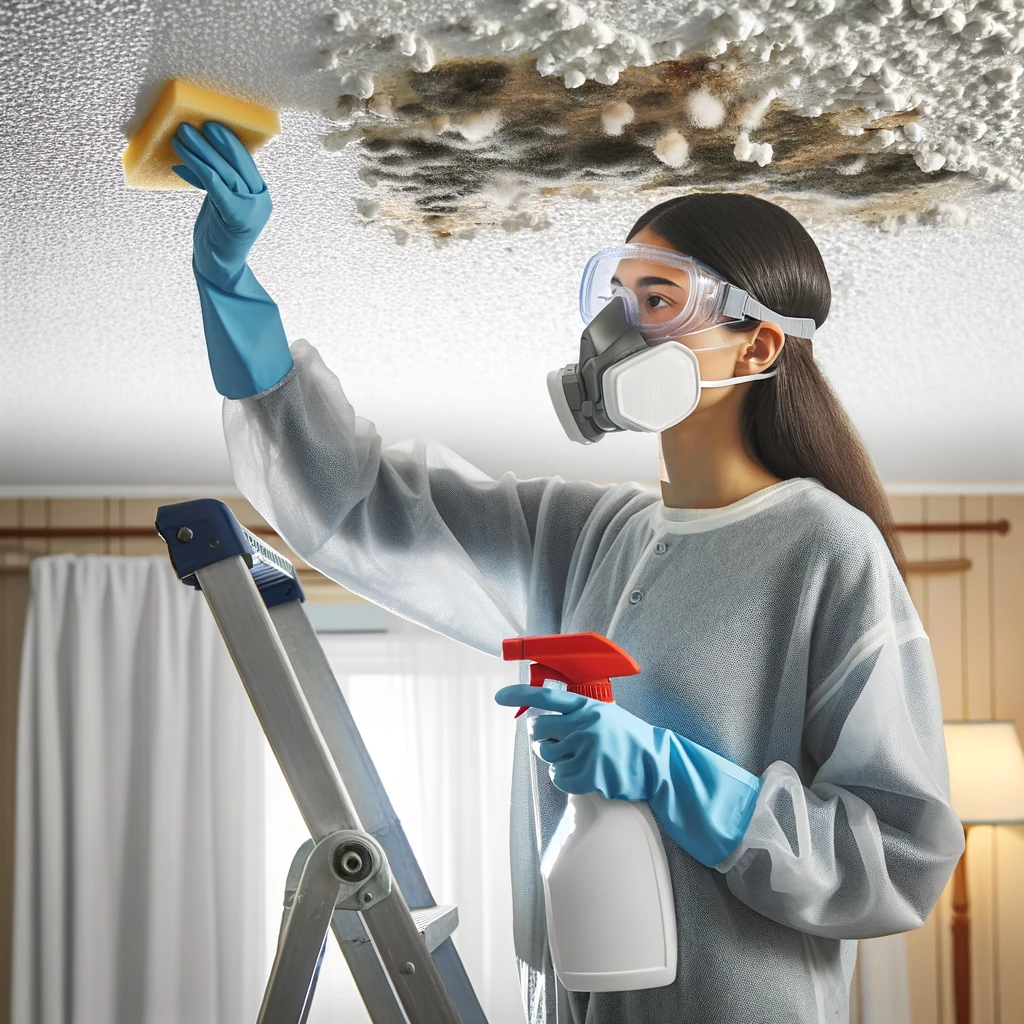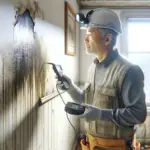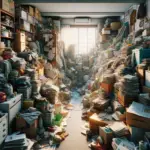[et_pb_section fb_built=”1″ admin_label=”Blog” _builder_version=”4.18.0″ _module_preset=”default” background_color=”#F9F6F5″ custom_padding=”||||false|false” collapsed=”on” global_colors_info=”{}”][et_pb_row _builder_version=”4.20.2″ _module_preset=”default” custom_padding=”||||false|false” global_colors_info=”{}”][et_pb_column type=”4_4″ _builder_version=”4.17.4″ _module_preset=”default” global_colors_info=”{}”][et_pb_text _builder_version=”4.21.0″ _module_preset=”default” header_2_text_color=”gcid-c6518ae1-29db-4f1f-99d4-4111b62b7e61″ hover_enabled=”0″ global_colors_info=”{%22gcid-c6518ae1-29db-4f1f-99d4-4111b62b7e61%22:%91%22header_2_text_color%22%93}” sticky_enabled=”0″]
Mold is a common problem that can affect any home, especially in areas with high humidity levels. Popcorn ceilings are particularly susceptible to mold growth due to their texture and difficulty to clean.
If left untreated, mold can cause health problems and damage to your home. In this article, we will discuss the steps you can take to remove mold from your popcorn ceiling, including what products to use and the cleaning process. We will also provide tips on how to prevent mold from growing in the first place, helping you keep your home healthy and safe for you and your family.
What is Mold?
Mold is a type of fungus that grows in damp and humid conditions. It can be found both indoors and outdoors and can come in many different colors and textures. It can appear as black, white, green, or grey spots on surfaces such as walls, ceilings, and floors.
Mold reproduces by releasing spores into the air, which can spread quickly if not addressed promptly. When mold grows indoors, it can cause health problems such as allergies, respiratory issues, and headaches. It can also damage your home’s structure if left untreated. Therefore, it’s important to identify and remove mold as soon as possible to prevent any potential health hazards or structural damage.
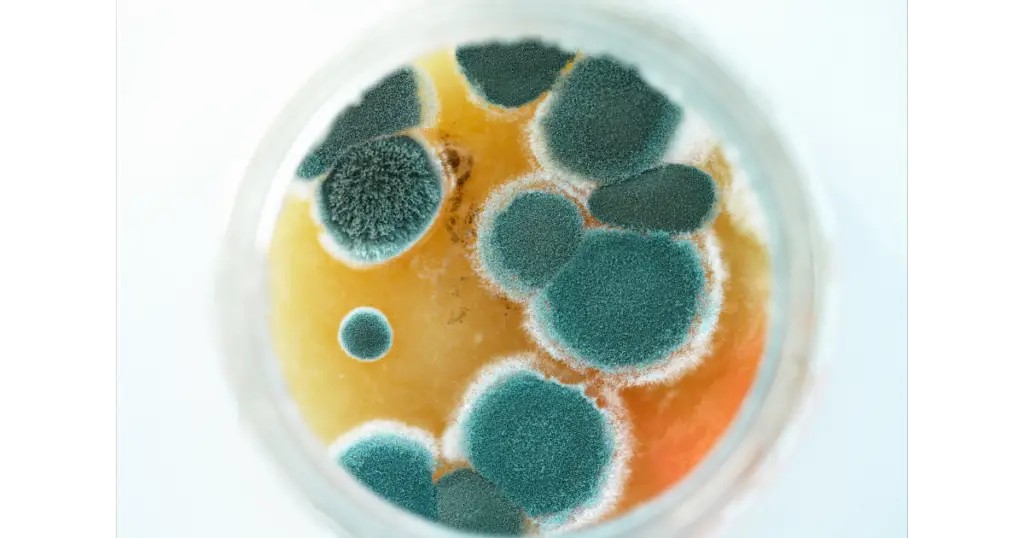
Mold Spores and Mold Growth
Mold spores are microscopic particles that are released into the air by mold colonies. These spores can travel through the air and settle on surfaces, where they can grow into new mold colonies if the conditions are favorable.
Mold requires three things to grow: moisture, a food source, and a suitable temperature. In homes, mold often grows in areas with high humidity levels such as bathrooms, kitchens, and basements. Common food sources for mold include wood, drywall, carpeting, and other organic materials.
Health Risks Associated With Mold
Mold exposure can cause a variety of health problems, especially for people with weakened immune systems or pre-existing respiratory conditions. Some of the potential health risks associated with mold include:
- Allergic reactions – cause symptoms such as sneezing, runny nose, itchy eyes, and skin rashes;
- Respiratory issues such as coughing, wheezing, and difficulty breathing;
- Asthma attacks;
- Toxic reactions – Some molds produce mycotoxins that can cause toxic reactions in humans when ingested or inhaled over a long period.
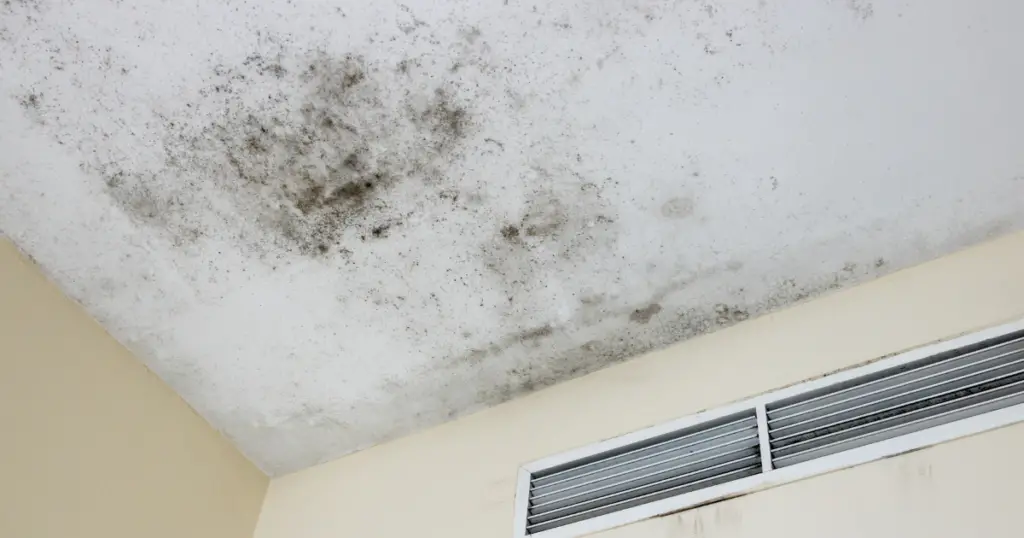
What causes mold in the popcorn ceiling?
Mold can grow on popcorn ceilings when the ceiling is exposed to moisture, such as from a roof leak or high humidity. The porous texture of popcorn ceilings can trap moisture, providing an ideal environment for its growth.
Additionally, if the popcorn ceiling has not been cleaned or maintained properly, dust and debris can accumulate and provide a food source for mold to grow on.
Bathroom Popcorn Ceiling Mold
Bathroom ceilings are particularly susceptible to mold due to the high levels of moisture that are present in these spaces. The steam from showers and baths can accumulate on the ceiling, providing the perfect breeding ground for its spores to thrive.
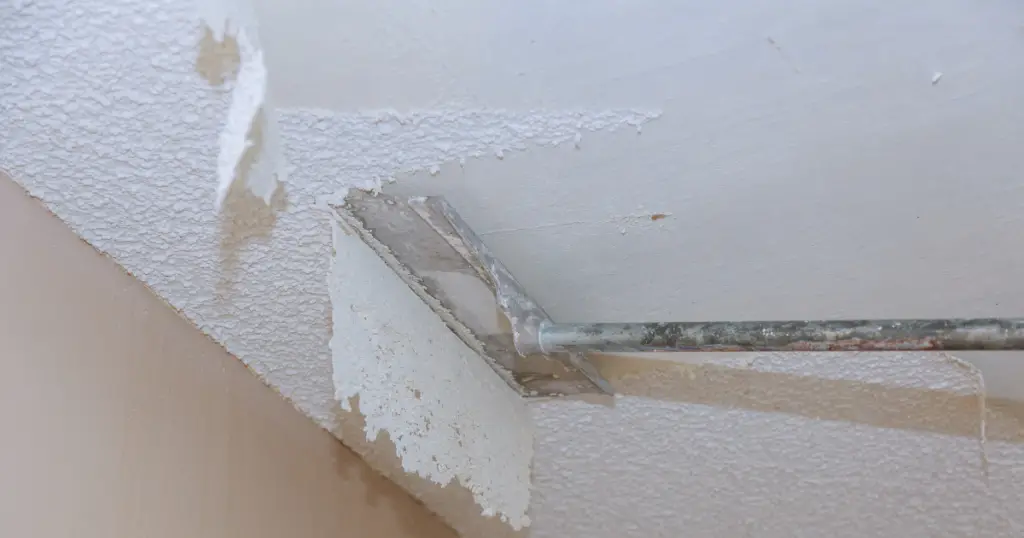
How to remove mold from popcorn ceiling?
Mold can be both an eyesore and a health hazard. However, to clean popcorn ceiling mold, it’s crucial to identify the root cause of moisture in your ceiling. While excess moisture is often the primary culprit for its growth, other factors such as leaky pipes or seeping water could also contribute to the problem.
Here are some steps you can take to effectively remove mold from your popcorn ceiling:
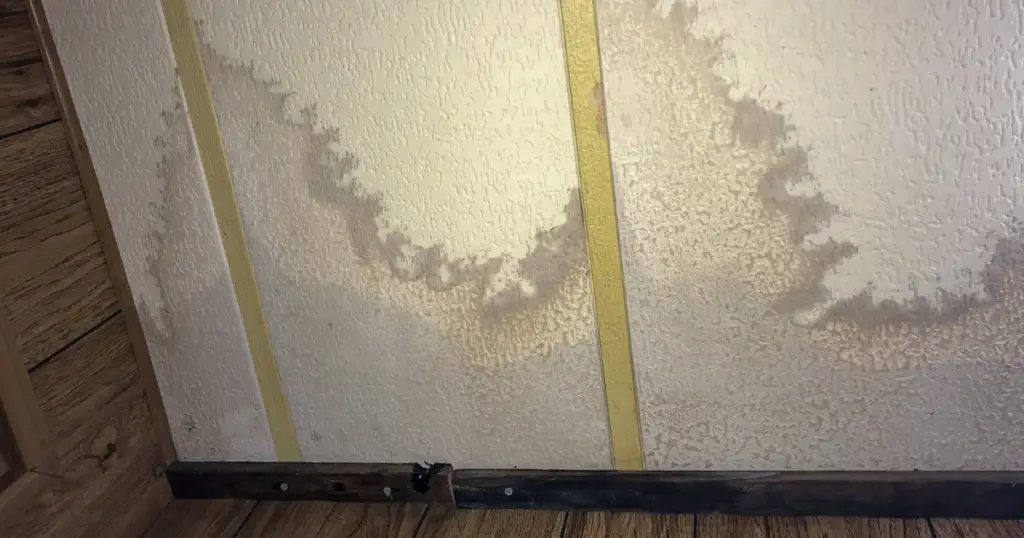
Protect Yourself
Before starting the cleaning process, it’s important to protect yourself from exposure to mold spores. Wear protective gear like gloves, goggles, and a mask that covers your nose and mouth to prevent inhalation of mold spores.
Isolate The Area
To prevent the spread of mold spores to other areas of your home, it’s important to isolate the affected area. Close doors leading into the room and cover any vents or air ducts with plastic sheets. Open the bathroom window throughout the mold removal process.
Clean It
Position a steady ladder under the mold-affected area. Make a cleaning solution with mild detergent and warm water. Apply it on the ceiling and let it loosens the mold from the popcorn texture. Scrub the affected area with a soft brush then dry the excess moisture with a dry cloth.
Spray It
In a spray bottle make a bleach and water solution ( 1 part bleach to 3 parts water). Spray the solution onto the affected area of the popcorn ceiling, making sure to saturate all visible mold growth. Let sit for 15-20 minutes.
Removing mold without chemicals is possible by using Essential Oils (5-10 drops in a spray bottle with water. Shake it before spraying it; water and oil don’t mix.) or undiluted Hydrogen Peroxide.
Rinse and Wipe
Use a clean sponge or cloth to wipe away any remaining mold growth from the surface of the popcorn ceiling. Rinse your sponge or cloth frequently in clean water as you work.
Fix and Improve Airflow and Ventilation
Once you have removed all visible mold growth from your popcorn ceiling, it’s important to address any underlying moisture issues that may have caused the mold growth in the first place. Repair any leaks or water damage immediately, and improve airflow and ventilation in the room by running exhaust fans or opening windows when showering or cooking.
Paint If Necessary
If there are still stains left on your popcorn ceiling after cleaning, you may need to paint over them with an oil-based primer before repainting with regular paint. This will help seal any remaining stains and prevent further mold growth.
Cleaning popcorn ceiling mold can be a challenging task as textured ceilings can be tricky to clean without causing damage. It’s possible that the cleaning procedure may not completely remove the mold, and the affected area could be compromised, not only on the surface but also deeper within. If you’re not sure how to proceed with cleaning popcorn ceiling mold, it’s advisable to seek professional help from experts in mold remediation.
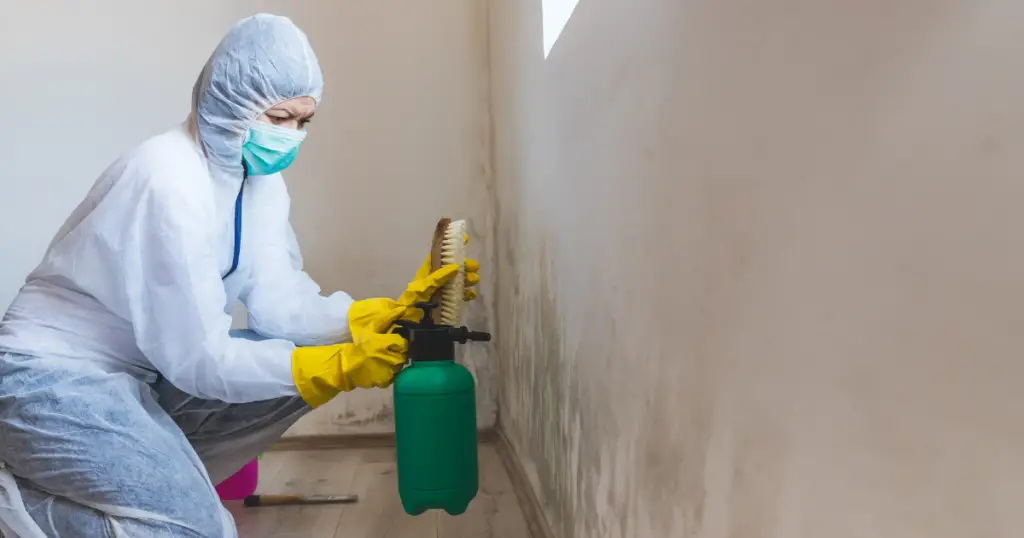
What cleaners can be used to clean mold?
When it comes to cleaning mold, several cleaners can be effective in removing it.
Vinegar
Vinegar is a popular and easily accessible option for cleaning mold. While there is still no scientific evidence to prove its effectiveness in killing mold, it has natural antimicrobial properties that make it a great cleaner and preventative tool. Simply use undiluted distilled white vinegar, apply it to the affected area, and let it sit for an hour before wiping it away with a clean cloth.
Bleach
Another popular option is bleach, which is highly effective in killing mold but should be used with caution as it can be harsh on surfaces and emit strong fumes. To use bleach, mix one cup of bleach with one gallon of water, apply it to the affected and allow it to sit for 15 minutes before rinsing thoroughly.
Hydroxe Perixide
Hydrogen peroxide is also an effective cleaner for mold removal. It’s less harsh than bleach and doesn’t emit harmful fumes. Mix equal parts of hydrogen peroxide and water, apply it to the affected area, and let it sit for 10-15 minutes before wiping it away with a clean cloth.
Tea Tree Oil Spray Bottle Solution
Tree oil is another natural option that has antifungal properties that make it useful for cleaning and killing mold. Mix one teaspoon of tea tree oil with one cup of water in a spray bottle, shake well, apply to the affected area, and let sit for an hour before wiping away with a clean cloth.
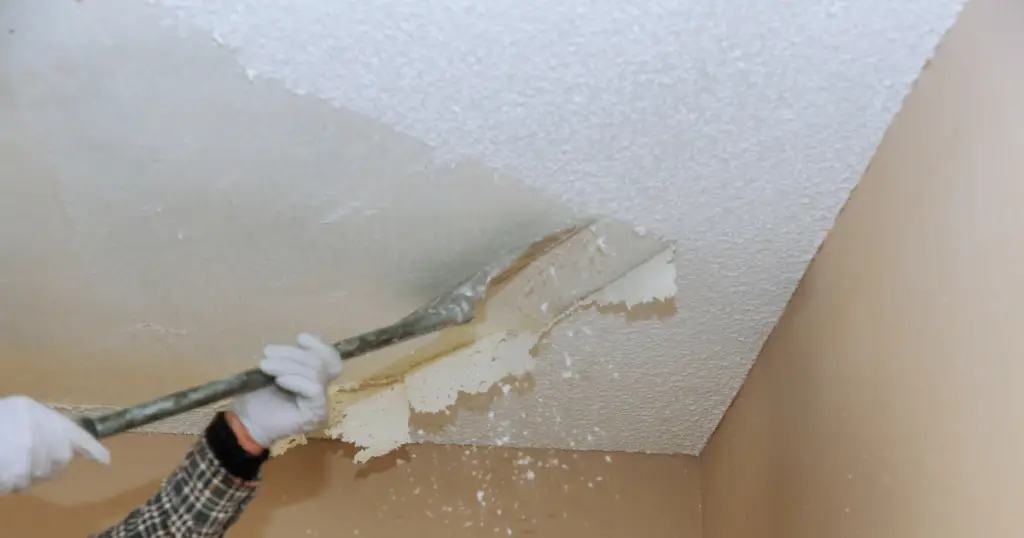
How to prevent mold in the popcorn ceiling from coming back?
Preventing mold from returning on a popcorn ceiling requires identifying and addressing the underlying cause of moisture. Here are some steps to take:
- Fix any leaks: Check for any water leaks in your roof, plumbing, or windows and fix them immediately.
- Improve ventilation: Increase air circulation by using fans or opening windows to reduce humidity levels.
- Use a dehumidifier: If you live in a humid climate or have high humidity levels in your home, consider using a dehumidifier to help control moisture levels.
- Clean regularly: Regularly clean your popcorn ceiling with a vacuum cleaner fitted with a HEPA filter to remove any dust or debris that can trap moisture.
- Paint with mold-resistant paint: Consider painting your popcorn ceiling with a mold-resistant paint that contains anti-microbial agents to prevent future growth.
Bathroom Popcorn Ceiling
To prevent mold in a bathroom ceiling, it’s important to follow similar preventative measures as you would in any other area of your home. This includes increasing ventilation, regular cleaning, and reducing moisture levels.
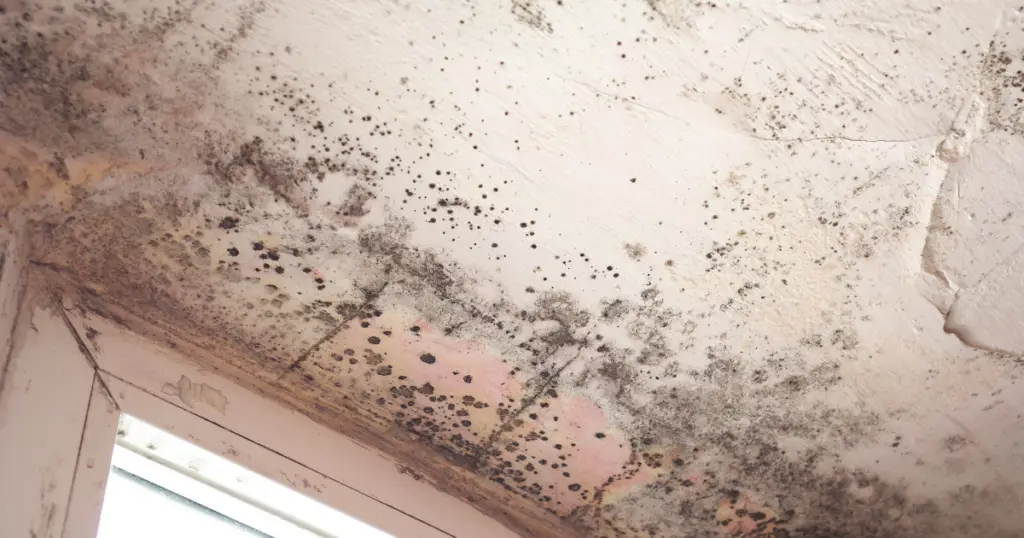
Can I paint over the mold on popcorn ceiling?
It is not recommended to paint over mold on a popcorn ceiling. Painting over the mold will only cover it up temporarily, and it can continue to grow underneath the paint. It’s important to remove the mold completely before considering painting the ceiling. Otherwise, you run the risk of mold spreading to other areas of your home.
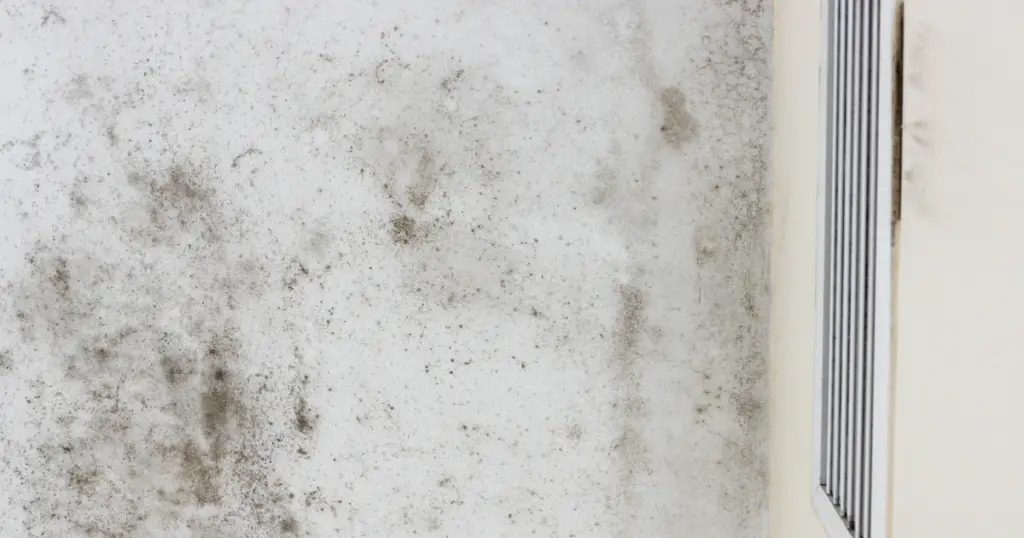
Professional Help
It is recommended to seek professional help when dealing with mold growth on textured surfaces such as popcorn ceilings. Professional mold remediation services have the experience and equipment necessary to safely eliminate mold from any surface, including hidden spores that could lead to future growth.
[/et_pb_text][/et_pb_column][/et_pb_row][/et_pb_section]

